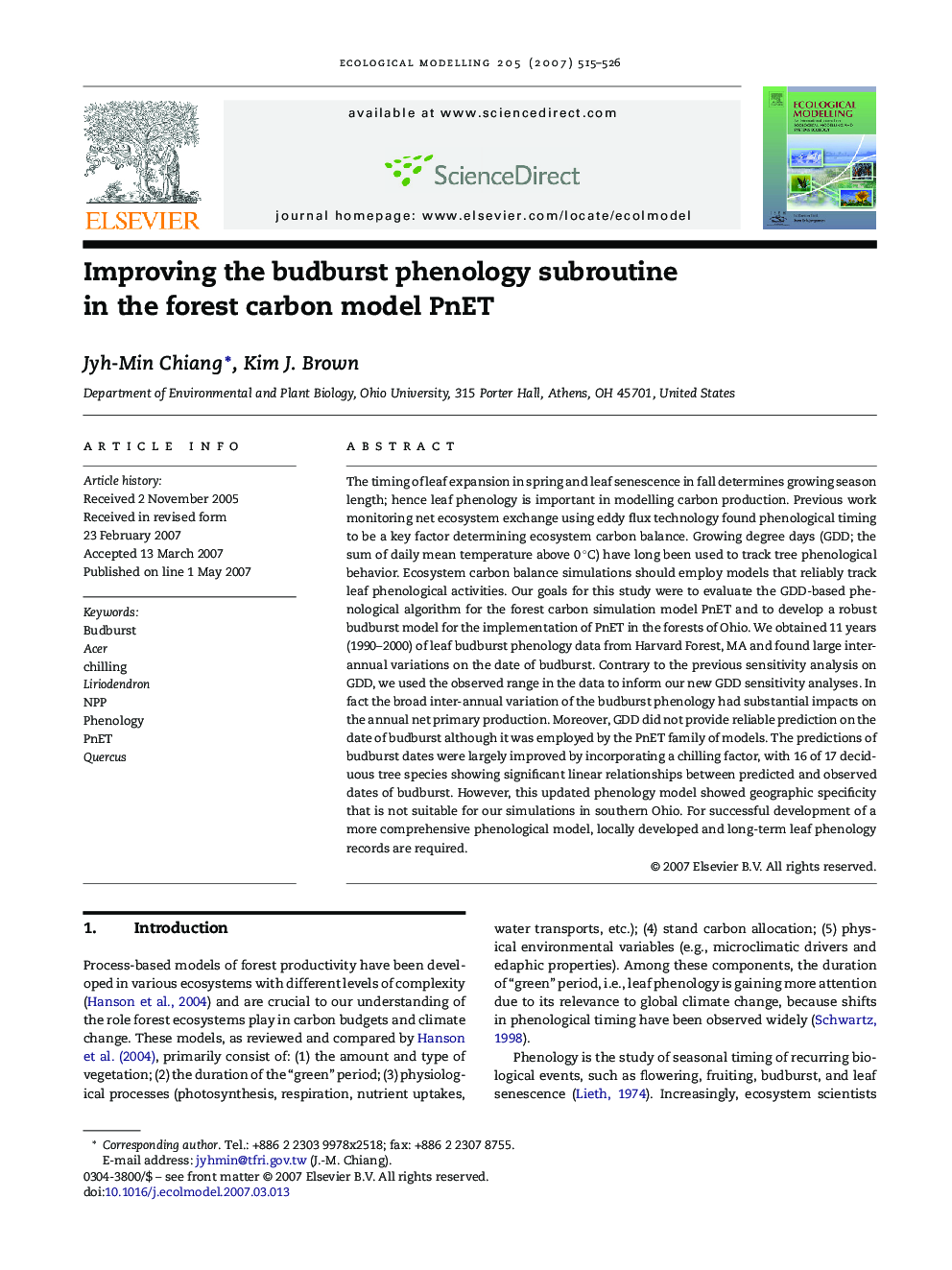| Article ID | Journal | Published Year | Pages | File Type |
|---|---|---|---|---|
| 4378768 | Ecological Modelling | 2007 | 12 Pages |
The timing of leaf expansion in spring and leaf senescence in fall determines growing season length; hence leaf phenology is important in modelling carbon production. Previous work monitoring net ecosystem exchange using eddy flux technology found phenological timing to be a key factor determining ecosystem carbon balance. Growing degree days (GDD; the sum of daily mean temperature above 0 °C) have long been used to track tree phenological behavior. Ecosystem carbon balance simulations should employ models that reliably track leaf phenological activities. Our goals for this study were to evaluate the GDD-based phenological algorithm for the forest carbon simulation model PnET and to develop a robust budburst model for the implementation of PnET in the forests of Ohio. We obtained 11 years (1990–2000) of leaf budburst phenology data from Harvard Forest, MA and found large inter-annual variations on the date of budburst. Contrary to the previous sensitivity analysis on GDD, we used the observed range in the data to inform our new GDD sensitivity analyses. In fact the broad inter-annual variation of the budburst phenology had substantial impacts on the annual net primary production. Moreover, GDD did not provide reliable prediction on the date of budburst although it was employed by the PnET family of models. The predictions of budburst dates were largely improved by incorporating a chilling factor, with 16 of 17 deciduous tree species showing significant linear relationships between predicted and observed dates of budburst. However, this updated phenology model showed geographic specificity that is not suitable for our simulations in southern Ohio. For successful development of a more comprehensive phenological model, locally developed and long-term leaf phenology records are required.
